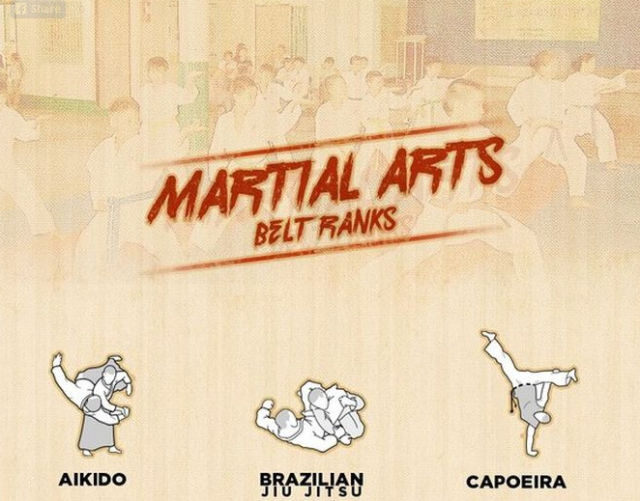The Trip And Change Of Martial Arts: Exploring Its Historical Structures And Modern Methods
The Trip And Change Of Martial Arts: Exploring Its Historical Structures And Modern Methods
Blog Article
Material Create By-Clemons Ross
Enter the globe of martial arts, where old origins and modern-day methods collide in an electrifying journey of self-control and self-discovery.
As you look into the background and advancement of this fascinating art kind, prepare to be captivated by the social influences, technological improvements, and profound viewpoint that have actually shaped it over centuries.
From federal criminal law firm of ancient worlds to the training grounds these days, martial arts have stood the test of time, continuously adapting and expanding.
Each strike, each motion, carries with it the weight of countless years of tradition and knowledge, passed down with generations. This is a story of resilience, of warriors who looked for not only physical prowess, yet likewise self-confidence and consistency.
Join us on this remarkable expedition as we reveal the secrets, the tales, and the transformational power of martial arts.
Prepare to be motivated, challenged, and forever transformed by the background and advancement of martial arts.
Social Influences on Martial Arts
As you explore the background and evolution of martial arts, you'll rapidly discover the interesting methods which cultural impacts have formed these battle strategies.
From https://bestfederallawyersnearme90098.theideasblog.com/30704902/enhance-your-legal-protection-technique-discover-the-crucial-understandings-needed-to-select-a-reliable-criminal-law-practice-devoted-to-protecting-your-civil-liberties-go-for-absolutely-nothing-except-the-most-effective of China and India to the more current developments in Japan and Brazil, martial arts have actually been greatly affected by the societies in which they came from.
As an example, Chinese martial arts, such as Kung Fu and Tai Chi, are deeply rooted in the philosophy of Taoism and the idea of Yin and Yang.
In contrast, Japanese martial arts, like Karate and Judo, mirror the samurai warrior practices and the values of discipline and honor.
In a similar way, Brazilian fighting style, Capoeira, incorporates components of African dancing and songs, reflecting the social heritage of African servants in Brazil.
These cultural influences not only offer each martial art its distinct characteristics yet also provide a much deeper understanding of the historic and social contexts in which they advanced.
Technical Innovations and Martial Arts
With the increase of advanced weapons and ingenious training tools, you've been able to improve your skills and adjust to the ever-changing battle landscape.
Technical advancements have actually revolutionized the means martial arts are practiced and instructed. Virtual reality simulations now allow you to train in realistic battle situations without the threat of physical harm. High-speed cams capture every move, enabling you to assess and ideal your techniques. Wearable devices check your heart rate, breathing, and muscle activation, offering instantaneous feedback on your efficiency.
Additionally, the advancement of specific equipment, such as resistance bands and agility ladders, has allowed you to improve your rate, stamina, and agility. These technological improvements have not only made training extra reliable however have likewise pressed the limits of what is possible in martial arts, allowing you to get to new elevations in your technique.
The Approach and Principles of Martial Arts
The ideology and principles of martial arts are deeply rooted fit your state of mind and instilling discipline, focus, and respect in your method.
1. Way of thinking: Martial Arts teaches you to establish a solid and durable frame of mind. It allows you to overcome difficulties both on and off the mat, pressing your restrictions and persevering when faced with hardship.
2. Technique: Martial Arts needs self-control and self-discipline. Via regular training and adherence to strict rules and methods, you learn to manage your impulses and create a strong work principles.
3. Focus: Martial Arts calls for intense emphasis and concentration. By educating your mind to be existing in the moment, you enhance your capability to react quickly and successfully during battle circumstances.
4. https://www.opb.org/article/2022/04/06/chief-justice-suggests-government-summit-on-oregon-public-defense-crisis/ : Martial Arts highlights respect for oneself, trainers, educating companions, and opponents. It shows you to value the skills and experiences of others, promoting a sense of friendship and gamesmanship.
Final thought
Congratulations on completing your journey with the captivating world of martial arts! Throughout browse this site , you have observed the abundant history and impressive advancement of these combat techniques.
From their ancient origins to the modern strategies we see today, martial arts have been shaped by cultural impacts.
The assimilation of technology has additionally played a significant role in changing the method martial arts are educated and practiced in the present day.
However, it is important to remember that martial arts are more than simply physical battle. They include extensive viewpoints and leading principles that go beyond the plain act of battling.
Take a moment to assess this anachronistic adventure and appreciate just how the legacy of martial arts continues to grow in the here and now, going beyond time and boundaries.
